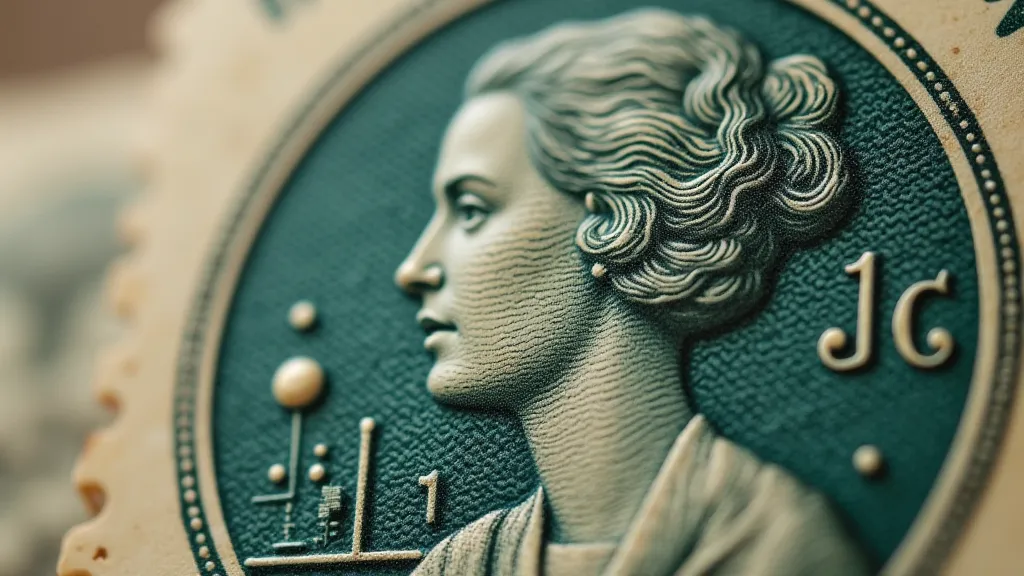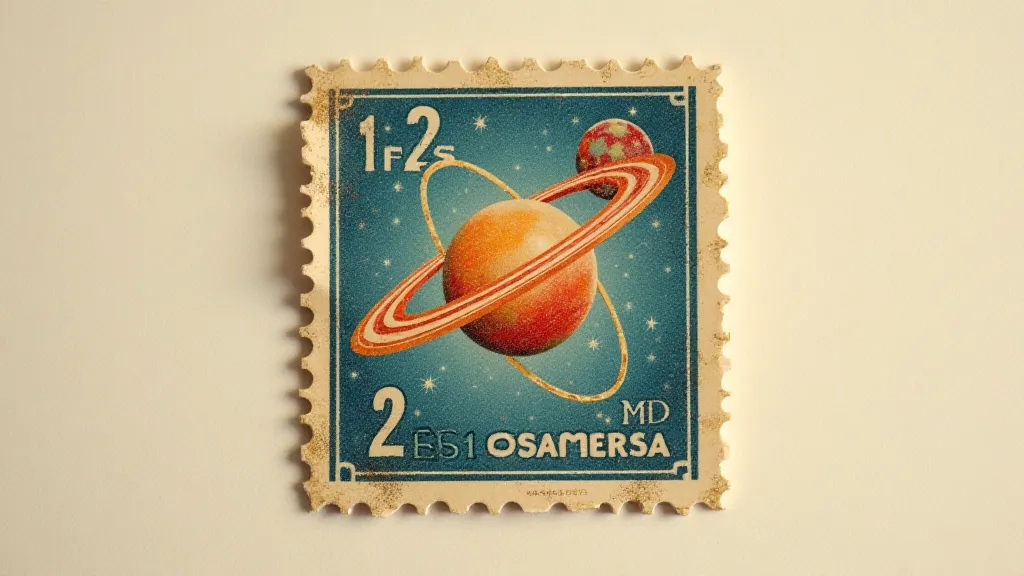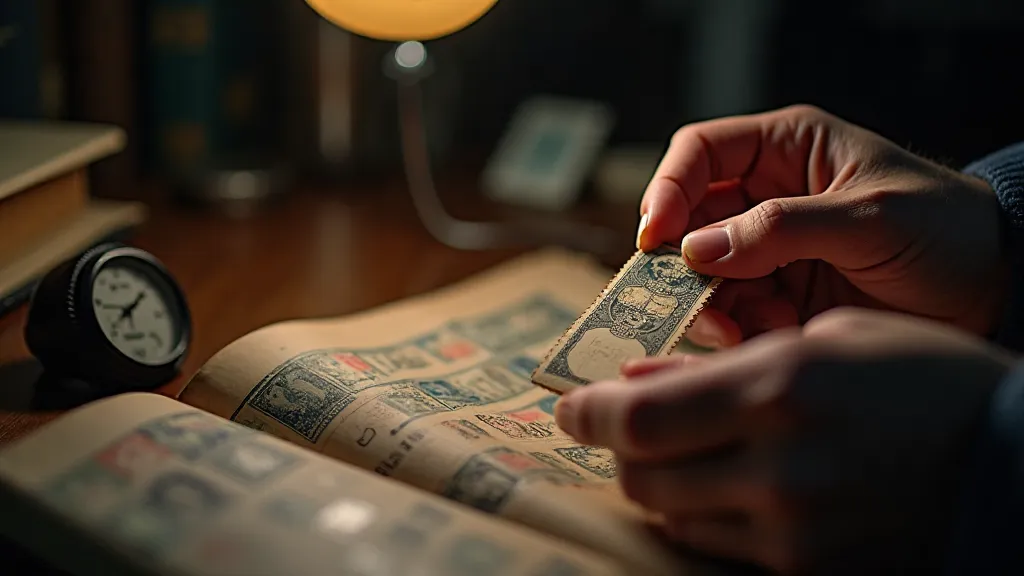The Paper Archive: Uncovering Forgotten Scientific Discoveries Through Early Commemorative Stamps
There's a quiet magic held within the tiny, perforated squares we know as postage stamps. More than just a means of conveyance, these miniature artworks often serve as time capsules, fleeting glimpses into a bygone era's values, accomplishments, and, crucially, its understanding of the world. While many stamps celebrate royalty, historical events, or national pride, a fascinating subset commemorates scientific breakthroughs – offering a unique and often overlooked window into the evolution of human knowledge.
My own fascination began with a single stamp: a faded Prussian blue portrait of Johannes Gutenberg. I was perhaps ten years old, sifting through a box of my grandfather’s old stamps, a chaotic jumble of foreign portraits, vibrant landscapes, and forgotten symbols. That single stamp, the depiction of the man who revolutionized printing, sparked a curiosity that’s only deepened over the years. It wasn't just a picture of a man; it was a visual testament to an innovation that fundamentally reshaped communication and, subsequently, the spread of scientific ideas.
The Dawn of Commemorative Science: Early Examples
The true blossoming of scientific commemoration on stamps came relatively late in the history of philately. Early postage stamps, largely issued in the mid-19th century, focused on portraits of monarchs and national emblems. The shift towards celebrating scientific discoveries began in the early 20th century, fueled by the burgeoning field of scientific understanding and the growing appreciation for its impact on society. These early commemorative stamps often coincided with significant anniversaries or milestones in scientific progress.
Consider, for instance, the early issues celebrating the bicentennial of Carolus Linnaeus, the father of modern taxonomy. These stamps, issued by several countries, depicted his portrait alongside illustrations of plants he categorized – a visual representation of his revolutionary system for classifying the natural world. They weren't just pretty pictures; they were subtle lessons in botany and a recognition of the profound impact Linnaeus had on our understanding of biodiversity. Or take the stamps issued to commemorate Louis Pasteur, the brilliant chemist and microbiologist whose work laid the foundation for germ theory. These stamps visually represented his experiments and recognized his contributions to medicine, effectively disseminating knowledge about hygiene and disease prevention to a wider audience.

Beyond Portraits: Visualizing Scientific Concepts
As the 20th century progressed, stamps began to move beyond simply depicting scientists; they started attempting to visualize the scientific concepts themselves. This was a far more challenging, and often wonderfully imaginative, endeavor. Early representations of atoms, for example, were delightfully naive, often resembling stylized solar systems with planets orbiting a central nucleus. While scientifically inaccurate by modern standards, these stamps reveal the evolving understanding of the atom – a journey from Dalton's solid spheres to the more complex models of Rutherford and Bohr.
The stamps commemorating the first successful transatlantic radio transmission were particularly compelling. They visually represented the technology – a powerful antenna reaching towards the sky, symbolizing the shrinking world through the power of communication. These weren’t just about the technology itself; they were about the promise of a more connected future, a future shaped by scientific advancement.
Collecting these scientific commemoration stamps isn’s solely about owning beautiful pieces of paper; it’s about collecting glimpses into the way humanity viewed its place in the universe at different points in history. It's about appreciating the tentative steps towards understanding complex phenomena.
The Art and Craft of Early Stamp Production
Examining these early commemorative stamps reveals a remarkable level of craftsmanship. The intricate engraving, the subtle color gradations, the careful perforation – all were hallmarks of a time when stamps were viewed as important symbols of national identity and a testament to the country's artistic and technological prowess. Many were engraved using techniques passed down through generations of skilled artisans. The quality of the paper itself – often a thick, durable card stock – further enhanced the stamp’s tactile appeal and longevity.
The evolution of printing techniques is also evident in these stamps. Early stamps were often engraved on copper plates and then printed using a process known as intaglio printing, which resulted in a raised, textured surface. Later stamps were produced using offset lithography, which allowed for greater detail and more vibrant colors. Recognizing these production methods can add another layer of appreciation for the philatelist.
The tactile quality of a truly old stamp is almost palpable. Holding one in your hand, feeling the subtle texture of the engraving or the slight curl of the paper, is a sensory experience that connects you directly to the past. It’s a reminder of the hands that crafted it, the machinery that printed it, and the countless journeys it has witnessed.

Preservation and the Collector’s Dilemma
Preserving these delicate pieces of history requires a delicate touch. Exposure to light, moisture, and improper handling can all cause irreparable damage. Storing stamps in archival-quality albums or stock books, away from direct sunlight and humidity, is crucial for maintaining their condition and value. Avoiding the use of acidic adhesives, such as common school glue, is also paramount.
The ethical considerations for a stamp collector are also worth pondering. Are we simply accumulating possessions, or are we acting as custodians of these historical artifacts? Sharing knowledge about these stamps – educating others about the scientific discoveries they commemorate – can be a meaningful contribution to the philatelic community. Many collectors choose to specialize in a particular scientific area—botany, physics, medicine— further deepening their appreciation and knowledge.
The rarity of certain stamps, particularly those with printing errors or variations in color, can significantly influence their value. However, for the true enthusiast, the intrinsic value lies not in the monetary worth, but in the historical and scientific significance of the stamp itself.

A Continuing Legacy
The legacy of these early commemorative science stamps continues to resonate today. They stand as tangible reminders of humanity’s relentless pursuit of knowledge, of the moments when our understanding of the natural world took a giant leap forward. They are a testament to the power of scientific discovery to inspire, to connect, and to shape our world.
Holding a stamp that commemorates Marie Curie’s pioneering work on radioactivity isn’t just holding a piece of paper; it’s holding a fragment of her legacy, a visual echo of a scientific revolution. And in that small, perforated square, lies a profound and enduring story – a story of human ingenuity, perseverance, and the unwavering quest to unravel the mysteries of the universe.





